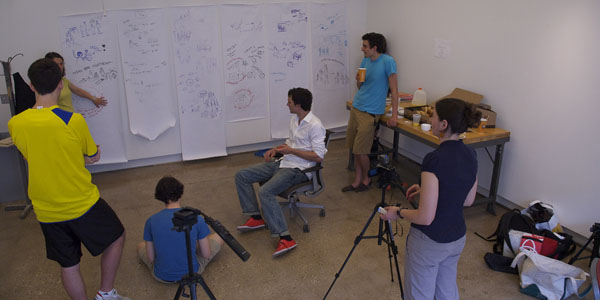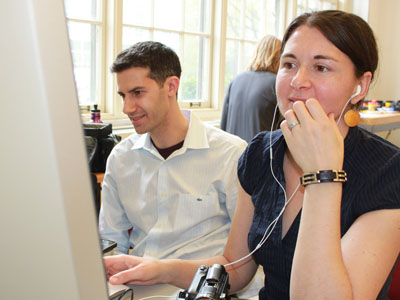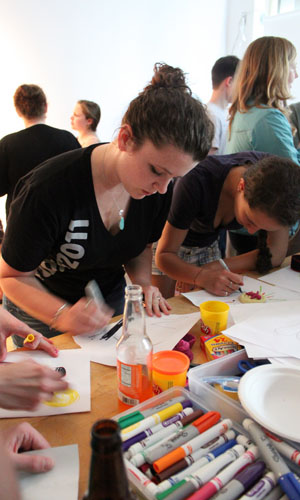Design for America Students Tell Their Stories Through Pop-Up Studio

Much of the power of Design for America lies in the student group’s stories: their inspirations, their trials, their successes and errors.
Elizabeth Gerber, assistant professor of mechanical engineering and the group’s faculty founder, knew these stories – the bold moments when students showed up unannounced at a doctor’s office to elicit advice for an educational toy, or the personal moments when students felt a sense of accomplishment after coaching a design team.
But how could she best encourage students to tell those stories? And how could those stories be presented?
An idea that had rolled around in her head for two years finally came to fruition May 12 when a multidisciplinary team that included artists, storytellers, students, and educators created the first Design for America Pop-Up Studio: a 12-hour multimedia storytelling experience that aimed to show the power of design as an agent of personal transformation.

Working in the Alice Kaplan Gallery in Northwestern's Kresge Hall, the four faculty members – along with a rotating group of about 30 students – created a working storyspace exhibit. Students listened to a story by writer David Sedaris and talked about how it worked: how to build a story using tension and emotion. They brainstormed stories they loved to tell and filled the gallery space with drawings and transformational objects – prototypes of students’ designs.
They then sat down in front of video cameras and told their own stories of design: designing a toy for children with diabetes, observing diners scraping their plates in a cafeteria, coaching a design team.
“The students worked along side each other to tell their stories of personal transformation in a captivating way,” Gerber said.

The videos and voicemails were posted in real-time on the studio website.
“Seeing all the stories in one place really heightened students’ realization of the similarity of their transformational experiences doing human centered design work,” Gerber said.
The event was streamed live, and by the end of the day Herman had put together a 16-minute video of the students’ stories, which they showed during a public exhibition that evening.
Gerber and her colleagues now hope to analyze the outcome of the challenge to see what they can learn from it. The students have already told her how much they’ve learned about design and the power of storytelling.
“What I’ve learned about DFA students is that they thrive on a challenge,” she said. “They work collaboratively, and doing something like this, an intense and public reflection – something outside their domain – is healthy for the organization.”